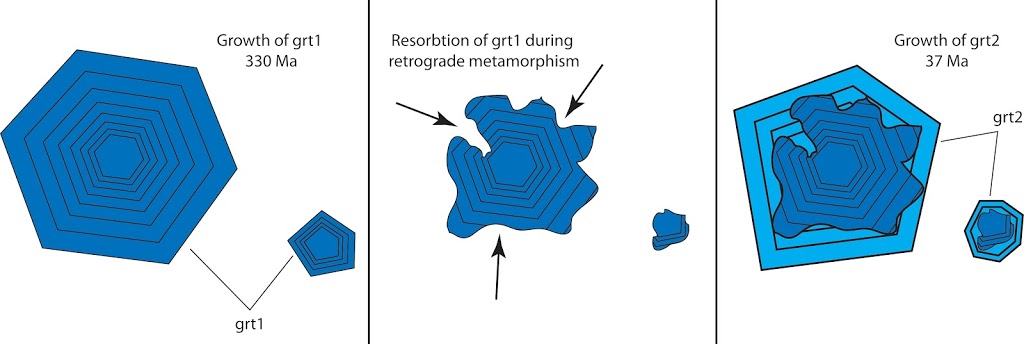Last week we transected the Apulian crust through the Ivrea-Verbano Zone to the Insubric Line. The Insubric Line is the suture between the Apulian crust that makes up Italy and the European continent. Within this suture zone is a sliver of oceanic crust zone known as the Sesia-Lanzo Zone. The Sesia Lanzo and other units of a similar affinity (Dent Blanche, Zermatt-Saas, and Adula Nappe) are tectonically interleaved above the Hercynian Basement of the Apulian crust within the ophiolitic fragment of the subducted Tethys ocean. These units lie adjacent to the Insubric line to the south and continue over 100 km north where the Penninic Nappes form large klippe of the Sesia-Lanzo ophiolite.
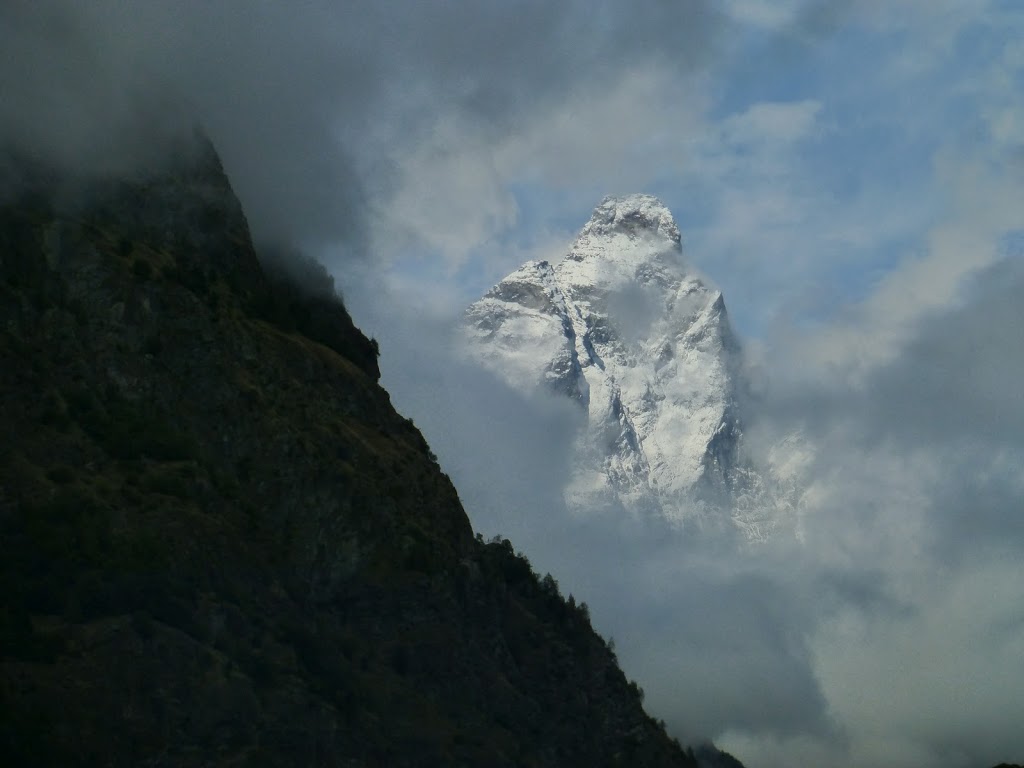 |
| The Great Matterhorn |
These ophiolitic fragments display blueschist to eclogite facies metamorphism of Mississippian and Eocene age. The overprinting (ultra-)high pressure metamorphic textures are indicative of double-dip tectonics. When continents collide part of the previously subducted oceanic slab remains too buoyant to subduct and squeezes its way up through the suture zone (see Beaumont et al. 2009 – EPSL for the classic Himalayan example). After tens and sometimes hundreds of millions of years, the suture zone of old collision systems become the weakest link when the continents are rifted apart (e.g. Caledonide Orogeny and the North Atlantic Rift, East Africa Orogeny and Rift). The Carboniferous Hercynian Orogeny was no different. Nearly 300 million years ago the Rheic Ocean closed via subduction and collision during the Hercynian orogeny where ophiolitic fragments were subducted to nearly 80 km into the mantle only to be exhumed back up the subduction channel to the surface. About 50 million years after the closure of the Rheic Ocean, the Hercynian orogeny was torn in two along its ancient suture zone forming the Teyths Ocean. This wide ocean was subsequently closed by the Alpine orogeny in the west and Himalayan orogeny in the east. In similar fashion to the Hercynian orogeny, the Alpine orogeny subducted the Tethys ocean to depth over 100 km where a portion returned to the surface incorporating a portion of the Hercynian suture zone material within it. Herwartz et al. (2011), were able to date single garnets using Lu-Hf chronometry within the Adula Nappe that had 336 million year old cores with 37 million year old rims with compositions both indicative of high pressure metamorphism.
For my journey through this blueschist and ecolgitic ophiolite, I visited the Valtournenche off the Aosta Valley in northern Italy. Starting at the base of the crust we see serpentinized peridotite. Peridotite is an ultramafic, olivine- and pyroxene-bearing rock found in the mantle. When peridotite is exhumed to the surface it is most often serpentinized by water-rock interactions. As the oceanic crust is subducted, hydrous mineral such as amphibole (e.g. Ca2(Mg,Fe)5Si8O22(OH)2) begin to dehydrate. The water that is driven off the downgoing slab interacts with the overlying mantle (peridotite) causing these reactions:
Forsterite (Mg-Olivine) + water → serpentine + brucite
2Mg2SiO4 + 3H2O → Mg3Si2O5(OH)4 + Mg(OH)2
2Mg2SiO4 + 3H2O → Mg3Si2O5(OH)4 + Mg(OH)2
Serpentine is found in three basic forms and each form generally corresponds with the varying temperatures of formation. The lowest temperature form is chrysotile (<300ºC), with antigorite next (300-600ºC), and lizardite as the highest temperature form (>600ºC).
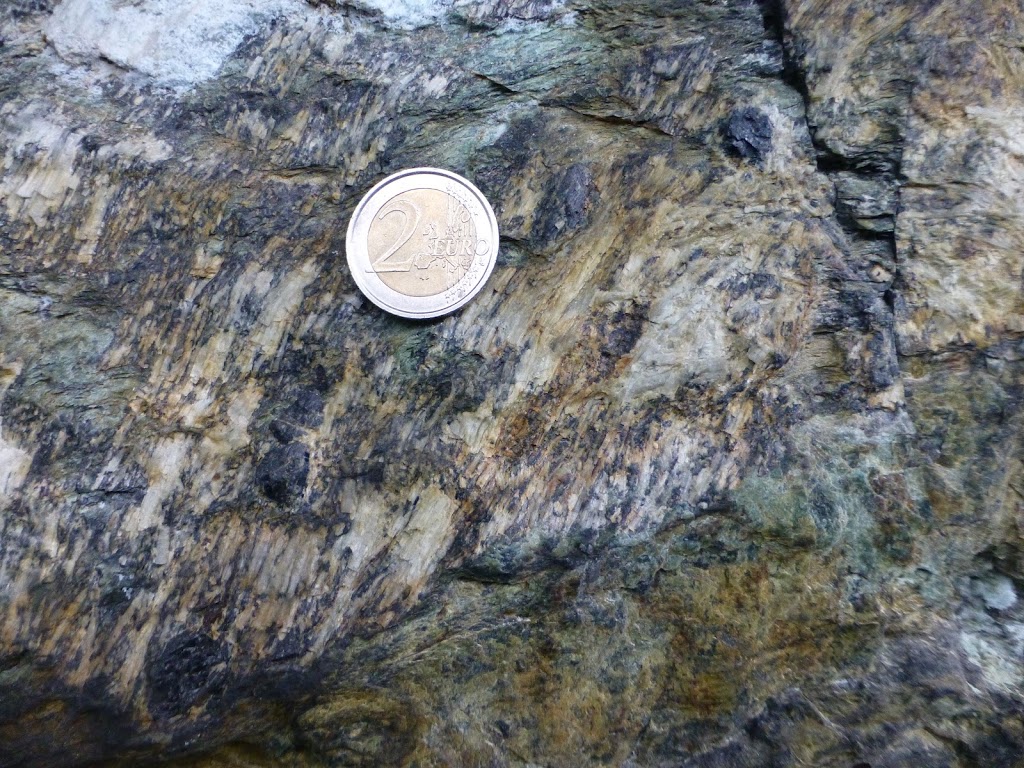 |
| Lizardite, brusite, and chromite in a serpentinite |
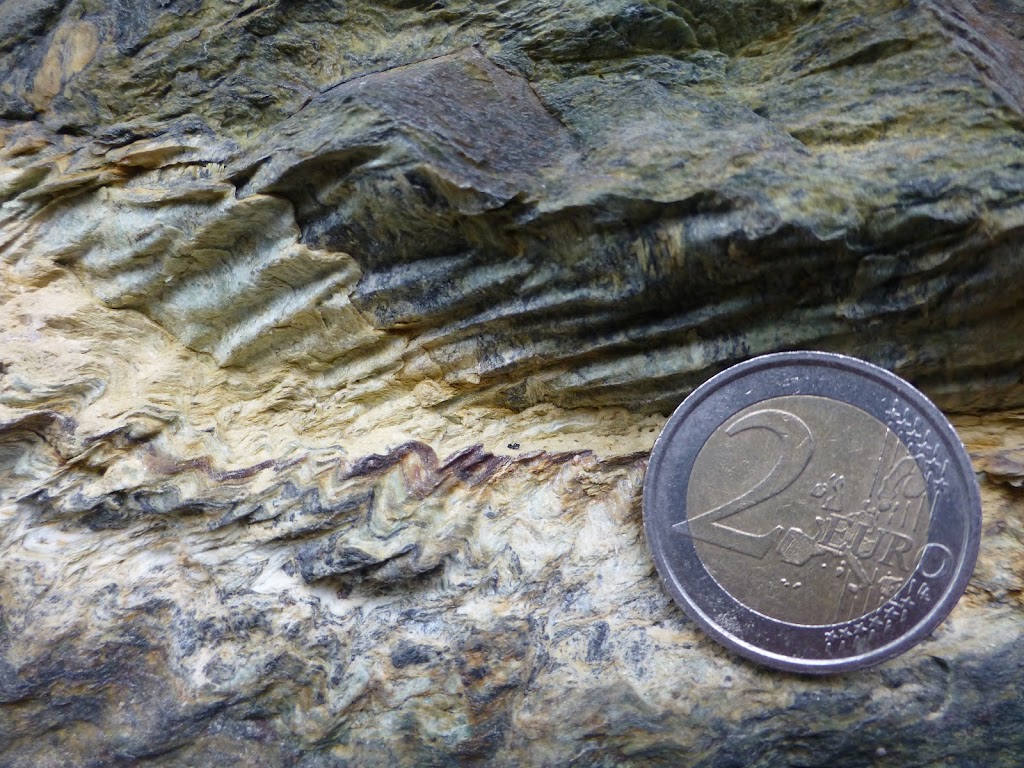 |
| Chevron folds in a serpentinite |
Above the peridotite are the layered gabbros and sheeted dikes which are poorly exposed (if at all) in the Sesia Lanzo, which brings us to the pillow basalts. In the Valtournenche, the pillow basalts have all been to blueschist facies metamorphic conditions. When basalt is subducted to >50 km the basaltic mineralogy of plagioclase, orthopyroxene, and olivine is transformed into glaucophane, lawsonite, and often garnet and titanite.
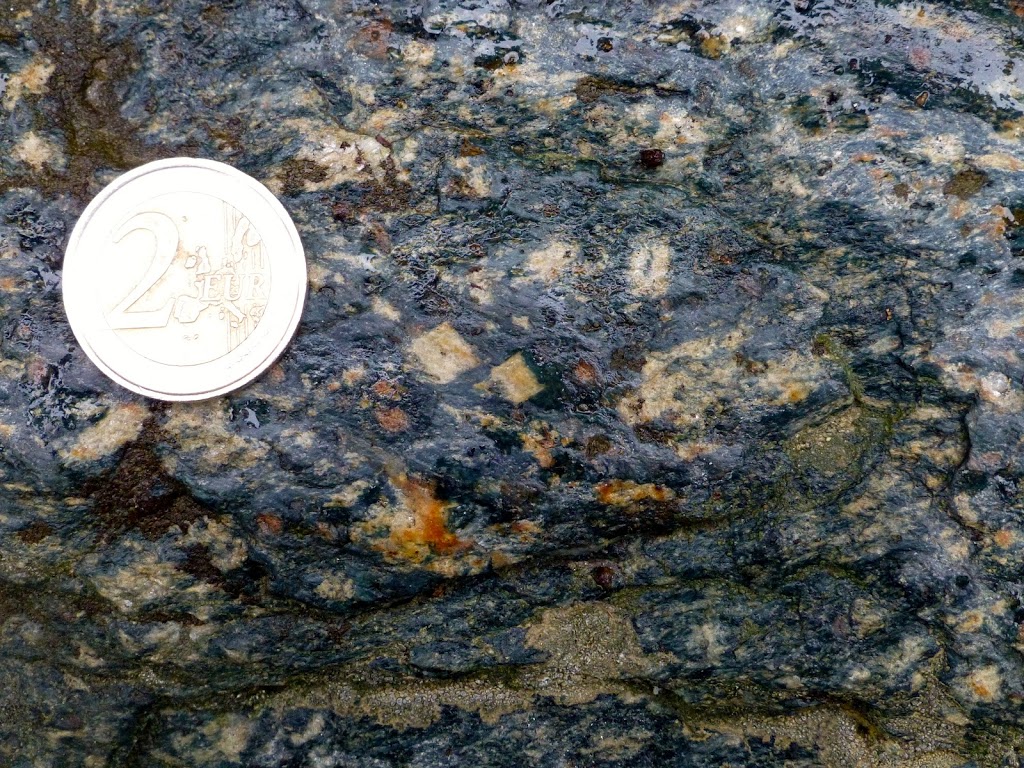 |
| Lawsonite (peach-colored, orthorhombic), Garnet (dark-red, round), and Glaucophane (blue groundmass) |
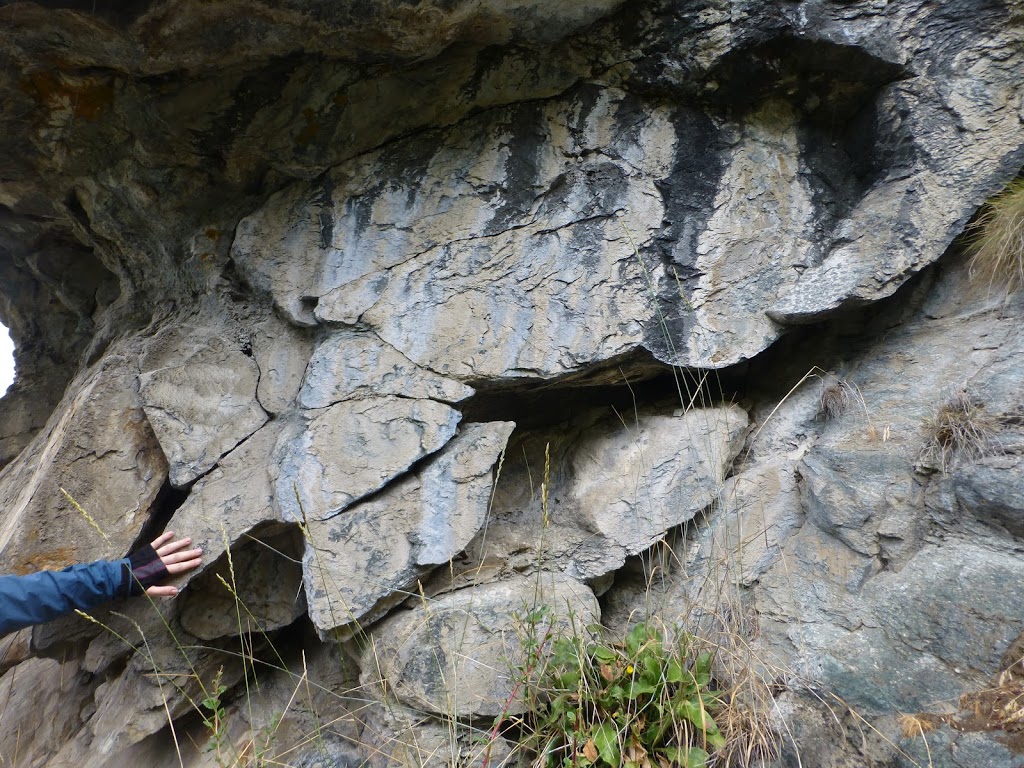 |
| Squashed pillow basalt |
Deeper still in the subduction zone are the eclogite-facies rocks. To see eclogites I jumped across the Aosta Valley to the south up the Saint-Marcel river to the now abandoned Servette mine. The Servette mine is a Fe-Cu mine that had been exploited since Roman times. The eclogitic blocks here are heavily altered in some places where hydrothermal fluids altered the composition of the host rock.
 |
| Look up the Saint-Marcel valley from the Servette Mine |
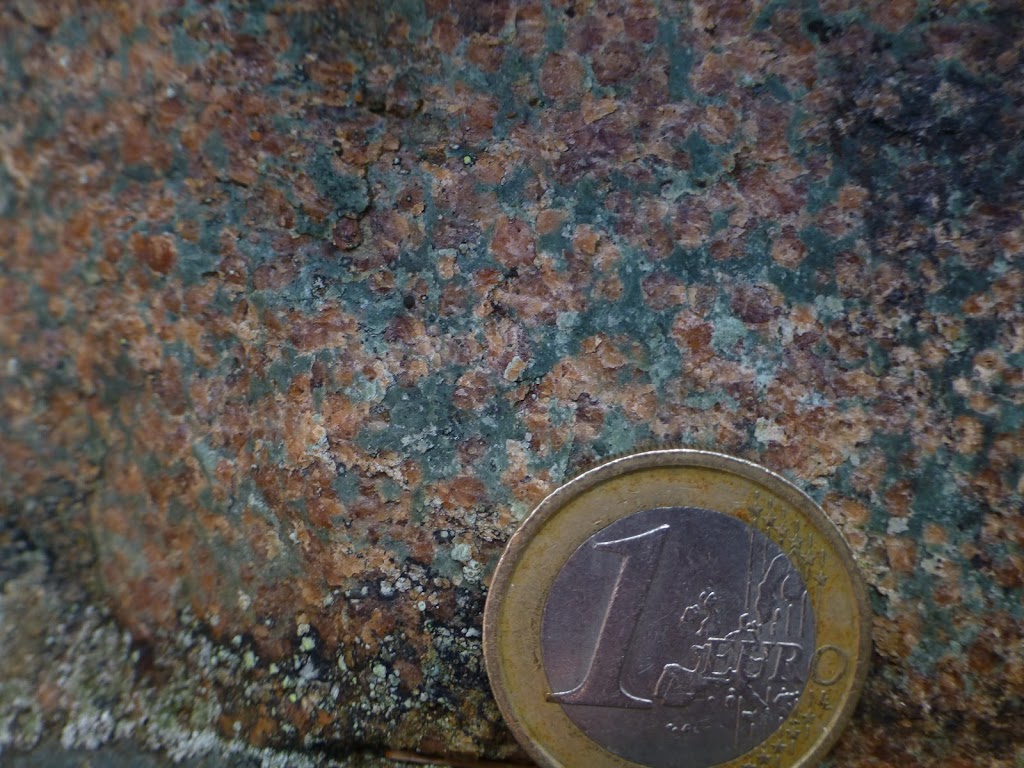 |
| Eclogite with garnet (red) and omphacite (green Na-pyroxene) |
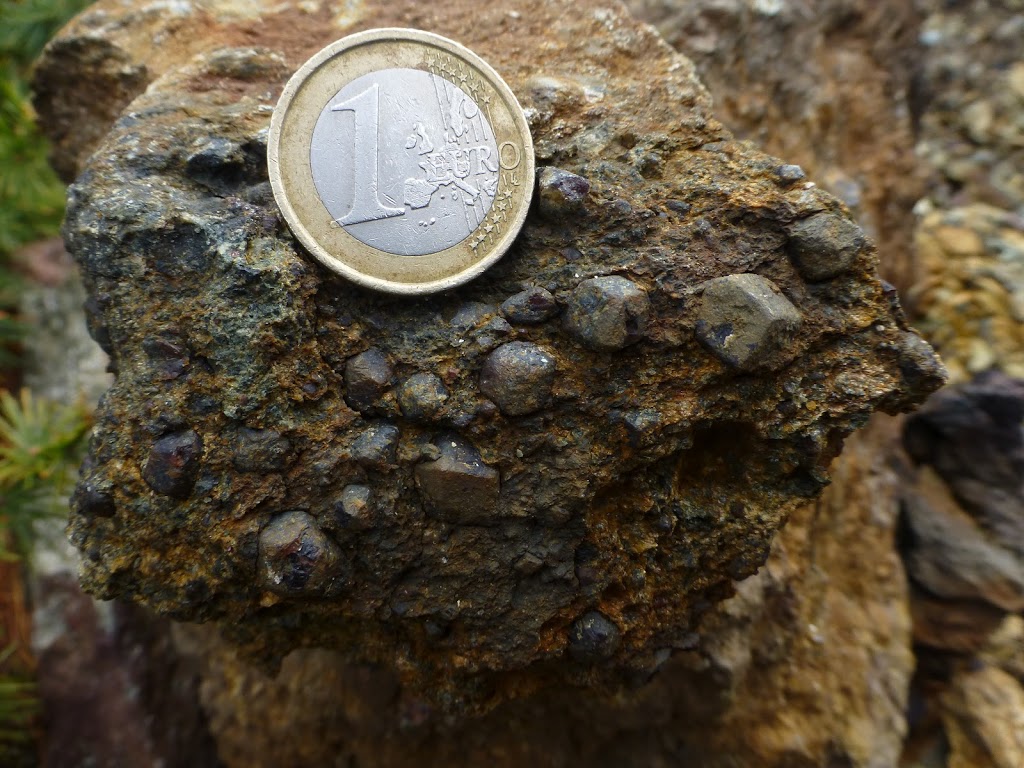 |
| Garnets weathering out of the rock |
These eclogites are thought to represent Jurassic black smokers on the sea-floor and are responsible for the Fe-Cu mineralization. Black smokers are underwater geysers that erupt high levels of sulfur-bearing minerals and form larges fields hundreds of meters wide where hot water comes to the ocean floor through fractures near the mid-ocean ridge. When this superheated water comes in contact with cold ocean water, many minerals precipitate, forming black chimneys around the vents. Sulfides metals such as pyrite and chalcopyrite are deposited often forming massive sulfide ore deposits after millions of years of hydrothermal activity.
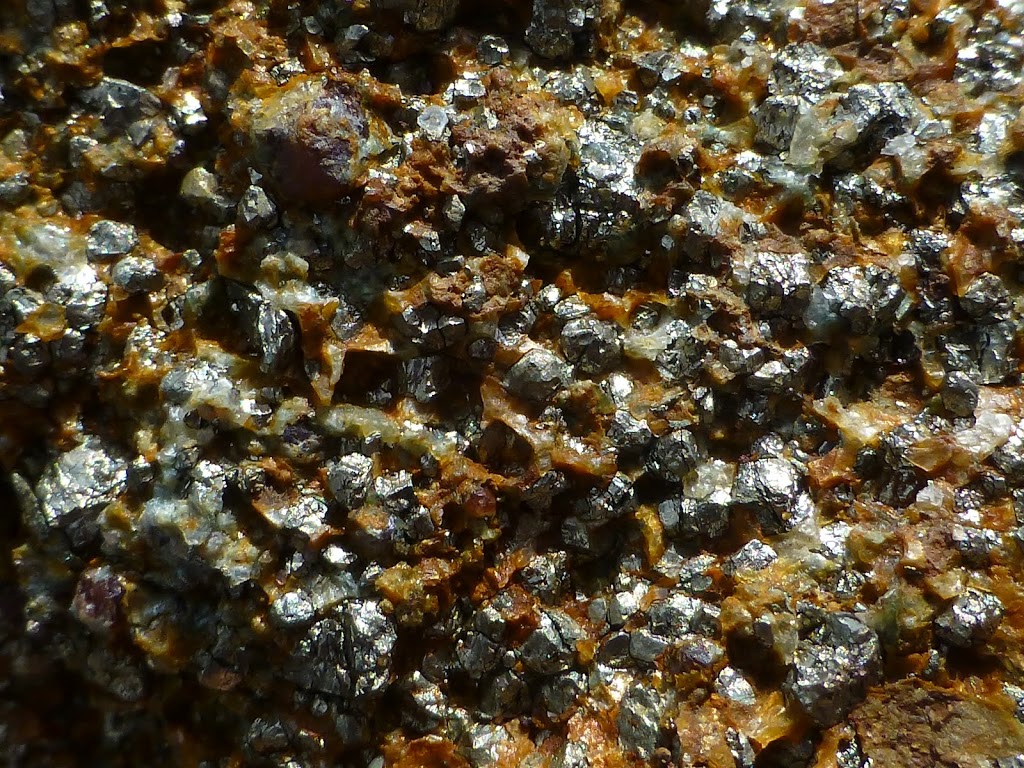 |
| Pyrite and Chalcopyrite in chert |
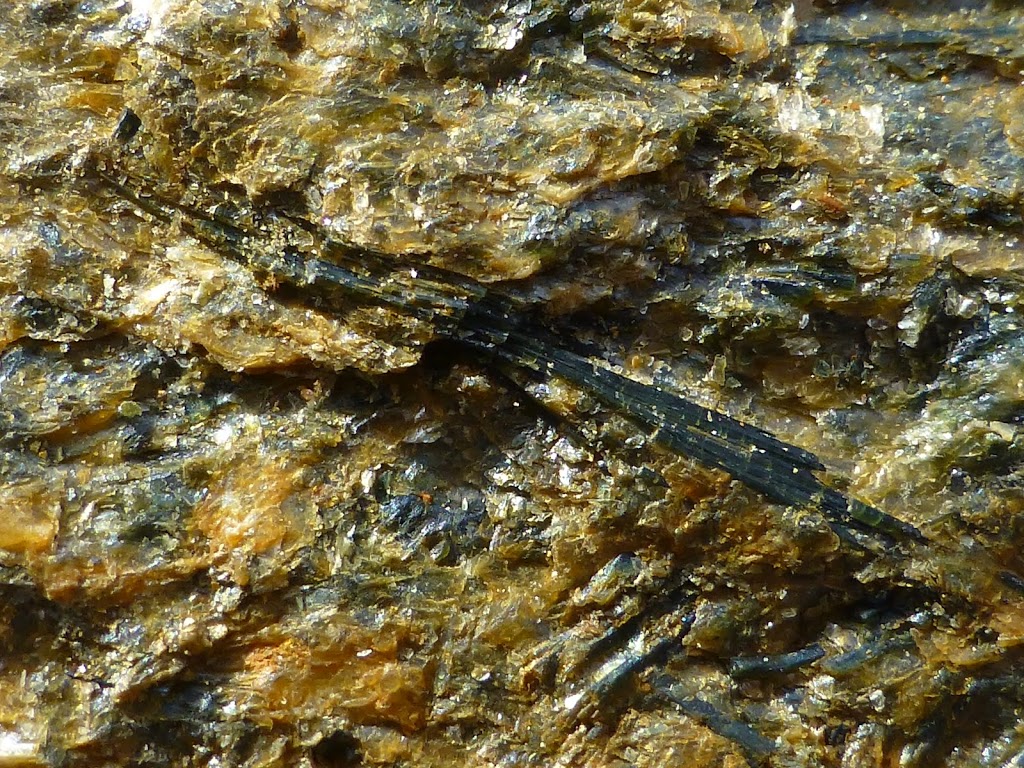 |
| Stibnite in chert (Sb2S3) |
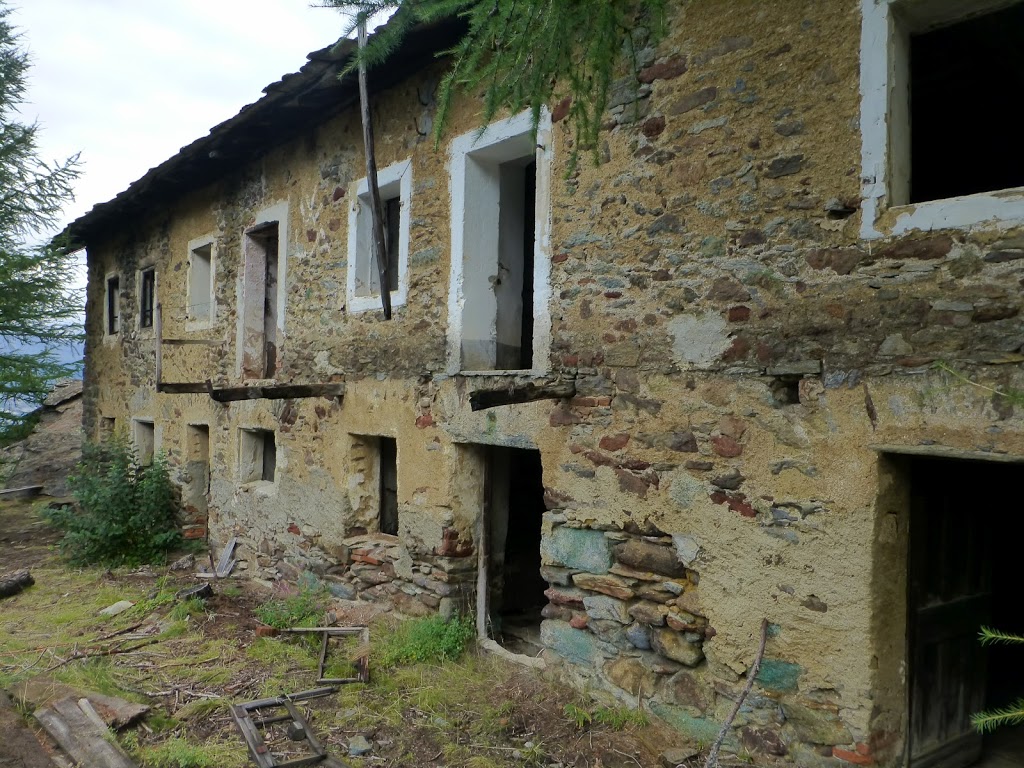 |
| Old mining establishment |
Next week, we will cross the Penninic divide to the Helvetic Nappes.
![]() This work is licensed under a Creative Commons Attribution-NonCommercial-ShareAlike 4.0 International License.
This work is licensed under a Creative Commons Attribution-NonCommercial-ShareAlike 4.0 International License.

